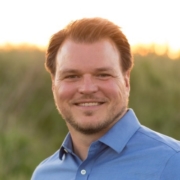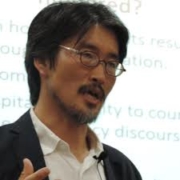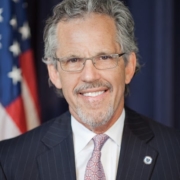William Doyle & Pasi Sahlberg
Let the Children Play
Play is a foundational element of a child’s life. Yet, how much is play embraced inside schools? My guests today, Pasi Sahlberg and William Doyle, argue play is the fundamental energy of learning. And schools need to embrace play much more than they currently do to support child development.
For Pasi and William, screen time and the educational reform movement that emphasizes standardized tests have reduced the amount of time children are allowed to play in school.
Pasi Sahlberg is a professor of education policy at the Gonski Institute for Education of the University of New South Wales, Sydney, Australia. He is a globally renowned educator, author, speaker, and scholar, and one of the world’s most respected authorities on educational improvement.
William Doyle is New York Times bestselling author and TV producer. Since 2015 he has served as a Fulbright Scholar, a Scholar in Residence and lecturer on media and education at the University of Eastern Finland, and as advisor to the Ministry of Education and Culture of Finland
Their new co-written book is called Let the Children Play, which was published by Oxford University Press earlier this year.
Citation: Doyle, William & Sahlberg, Pasi, interview with Will Brehm, FreshEd, 183, podcast audio, December 2, 2019. https://freshedpodcast.com/pasisahlberg-williamdoyle/
Will Brehm 3:10
Pasi Sahlberg and William Doyle, welcome to FreshEd.
Pasi Sahlberg 3:12
Thank you very much.
William Doyle 3:13
Hi Will.
Will Brehm 3:14
So let me start with you Pasi. In your new co-written book with William, you basically make the charge “let the children play”. Why is that? What are the benefits of play in your opinion?
Pasi Sahlberg 3:28
Well, that’s the basic question for the entire work that we have done the research that took many years. First of all, we started with the notion globally – and definitely in the United States, but also in Australia where I am – that the children don’t play as much as they used to. It was kind of stunning to hear from experts and parents and children themselves that they don’t have time to play. Some of the children even said that they are too busy to play. So, at the same time we started to look at some other things that that children and young people are experiencing. For example, that their mental health in many parts of the world is not what it used to be, or what it should be. And also, their physical activity during the school days and when they are not in school has declined. So, there are many things that young people are living with. And the final thing that with William we realized that why children are doing this is that they seem to spend a lot of time, much, much more than a few years ago, with the technologies, with all kinds of screens. So, we put all these observations together and we realized that something is happening in the worlds of children around the world. And this one thing was that they don’t play, as they should, outdoors. So, we started to look at this thing more closely. And you know, the benefits for all of these things about the children’s well-being and physical health and mental health and many other things are obvious. So, for us, the question is really critically important: what role the play has. And when we started to speak to experts, and definitely the children’s doctors, we very quickly realized that we have a huge issue there. And that’s why we wrote this lengthy story called “Let the Children Play” to help people to understand more about what is at stake.
Will Brehm 5:26
And William, I guess I want to ask even a more fundamental question, rather than why, but what. What exactly is play? How do we even begin to understand and identify the action and activity and process of play?
William Doyle 5:43
Well, there are a lot of different definitions, Will. Pasi and I are happy with several of them. One is the idea of periods of intellectual or physical freedom given to children at home, in the community, and especially at school, where they have basic materials and some basic guidance, but they’re largely organizing themselves, under safe supervision, of course. But they’re exploring and failing and failing and succeeding and collaborating largely on their own; teaching each other how to be human beings and how to fall down and skin their knee and how to build an enormous block tower together and how to thrive as children. Because children learn a lot more from each other, in many senses, than they do from adults telling them what to do. Now, what Pasi said is quite a revolutionary idea, and it may sort of shock some parents, and even some teachers these days, which is that play is a fundamental engine of learning for children. And if you don’t believe us, think of what the American Academy of Pediatrics said recently, “the lifelong success of children is based on their ability to be creative, and to apply the lessons learned from playing”, which is a stunning idea because schools in America have largely demolished play, and the theory being that the more academic learning you pack into the day, and the more you cut recess or cut periods of choice or passion projects, then they’ll do better on standardized tests, which is a really absurd idea, but it’s taken over much of American education and increasingly, we understand, in Australia, the UK and other countries as well.
Will Brehm 7:36
Pasi, do we have any sense of how much time children are even playing in school today? Is that empirically researched?
Pasi Sahlberg 7:45
There’s a lot of research in different countries about that. One thing we need to understand that when it comes to children’s play, there’s a huge variation from family to family and child to child and community to community. So just looking at these average figures: how many hours or minutes children play during the day, doesn’t really reveal the whole picture. The whole picture is much more interesting when we take a look at the individual level or kind of types of children. I think the interesting thing that we found, through the research for this book, is that how little children actually have time during the school day to play. And certainly, the outdoor free play that we, with William, in the book, we hold as the highest order play, if you wish – the kind of ideal thing when people ask, “So what should I do if I want my children to play in a school, or at home?” we say, “Let her or him go outdoors and just play freely with other kids.” And this type of play, in many parts of the world, has practically disappeared from schools. Australia, where I do a lot of work with the schools, I’ve seen many schools where the daily recess for children, of which not all the time is for free play, can be as little as 20 minutes a day. And we also know, through our research, the University of New South Wales currently, and there’s a lot of research in the United States where parents are clearly indicating that when they were at their own children’s age, that they used to play much more. According to our current research, about 90% of the Australian parents say that when they were young as their children, they used to play much more. It’s about the same rate in the United States. So, we have a lot of evidence, not necessarily exact minutes or hours – that is not important. I think the important thing is that things have gotten worse in the lives of children in terms of their access and opportunities to play, and certainly in school. So that’s what we are kind of stressing in the book, and making appeal for parents, and educators as well, that things have to change. We have to rethink this thing and make sure that every child has at least one hour time to play when they’re in the school. And another hour when the parents or caregivers are taking care of them at home.
Will Brehm 10:25
And Pasi, are there differences in terms of type of child? So, children from rich families or children from particular races or particular genders of children? Do we see differences in amount of play that those different types of children are able to participate in?
Pasi Sahlberg 10:46
Will, this is a great question. I will ask William to say something from the United States or New York City perspective. But you know, the interesting thing that we are seeing now, for example, in places like Finland or Australia is that technology that is now available for everybody is beginning to play an important role here. In a sense that it’s so easy for parents to hand over their iPad or computer or smartphone to the kids and let them entertain themselves indoors while the parents are doing often the same things by the way. But sometimes doing things like taking care of the family. You may have a single parent who has to cook or clean or look after the other siblings or kids. And this time is away from going to the playground or going to the forest and doing these things that we are talking about in this book. So we are beginning to see – and this is something where we have early evidence from our research now in Australia – that the children who come from the middle class or lower middle class or poor families are more likely to be held indoors and captured by these new devices and gadgets as almost like new nannies for the kids than those parents who are more affluent, and who can afford … who have more luxury to spend time with the children and probably have some other people taking care of their daily things. But let me pass this to William, because I know that William is taking a look at these things much closer in the United States than me.
William Doyle 12:23
Well yes, I’ve been looking at this as a public-school parent in New York City, which is incredibly stratified economically and racially. And I’ve also been a public-school parent in Tokyo and a public-school parent in Finland, where of course, pretty much one hour of outdoor free play is guaranteed; built right into the system now. And similarly, in Tokyo, by the way for the younger ages. Now, in the case of New York City, the poorer the school, which means the more African American and largely Latinx the school is, the more that children are subject to a hideous practice called “recess punishment” or “recess detention”, where recess is literally used as a carrot, or incentive or behavior modification tool. And I’m not talking about people fighting in the playground, then you have to move in and separate people and deal with it. I’m talking about kids being punished for late homework, or goofing around on the lunch line, and then they have their recess taken away. It’s at epidemic proportions in New York State. I recently was involved in multiple school board resolutions being passed to ban it. But what’s really crazy about it is the research says that the more you let children play, the better they do on standardized tests, and the better they behave in class, regardless of any anecdotal theory that a parent or even a teacher might have. That’s the reality. So, we must be giving children more time to express themselves physically at recess. And high-quality physical education. If you go to the wealthiest schools in New York, the private schools, the one thing they do is they give every child, in many cases, daily physical education of a high quality. And right now, my child in a public middle school gets a gym class once a week, and he gets a 20-minute recess tacked on to lunch. That’s not right, and I think parents have to get together with teachers and change this.
Will Brehm 14:28
And William, are we talking about children in primary school, or should children in secondary school also be given the opportunity to play more?
William Doyle 14:38
Well, Pasi and I believe that play and its sort of adapted versions in the higher years, play is applicable to every child on earth under the age of 18, 17 and under. Now, it’s going to take different forms, but the common denominator is physical movement, physical activity and periods of breaks, or just free periods during the day. Because in America, we give them nothing. There’s no transition time, no breaks. And that makes absolutely no sense. In Japan, my son had 60 minutes of breaks and outdoor recess twice a day. So, it all totaled up to over 60 minutes, and that was an elementary school. And I think this is applicable all the way up to 17 years of age and probably you and I and Pasi could benefit from it, too.
Will Brehm 15:30
I know I could. I could always use some more exercise.
Pasi Sahlberg 15:33
Will, let me jump in here because this is a critically important question that who are those children, who should play? And just like William said, we truly believe that play is inclusive for everyone. We say as Bernard Shaw said that “We don’t stop playing when we grow old. We grow old because we stop playing.” And one of the personal idols that I have, kind of a role model that I have, is Sir Richard Branson, who is known as somebody who takes this play very seriously. He says things like, “Work hard and play harder.” And I had a chance to visit his home in the Caribbean a couple of times, and if you see the environment where he lives every day, or most of the year, it is filled with kind of ideas around anywhere you go that this is a place to play. They’re like visible invitations there for you to go and play, try something new, or ask somebody to come with you and play a board game or hanging a rope or do things like this. And I’m often asked this question that people say things like, “I understand that early childhood education or even primary school play is okay, and we can do this. But how about high school when the kids are in their teens or 17, 16/17? They’re almost adults.” And my response always is that when we write about the idea that all the children should play, we’re not talking, necessarily, about the same type of play. Of course, a 17-year-old in high school will not do the same things as a three-year-old in a preschool, a kindergarten. But the schools … If you walk into almost any high school in New York or in Sydney or in Tokyo or even Helsinki, and you look around, it is very hard to see anything at all, anywhere there in the school that would give you any kind of a invitation to play. The school, high school buildings are everything but not the places for play. And this is what I’m telling people that if you really believe in the power of play, as we do when we have been working on this book, one thing you can do, of course, it is to make sure that young people, high school students, have time … opportunities to play, that they have time for themselves and recess. But also redesign the school environment, in a way, that you have spaces and places where the play is present. Where there are opportunities to play different types of things or try different types of things, without telling people that, “Now you have to go and play. Take this 15 minute and play in the sandbox.” That’s one way to do it, but the other way is to redesign classrooms and hallways and assembly halls in high schools, and school yards in a way that play would be much easier to engage with that it is now.
William Doyle 18:37
Absolutely. We think that school should be a child’s favorite place. Children should not want to leave school at the end of the day. And you can do that, and the beautiful thing is that play delivers physical benefits, social benefits, cognitive benefits, and emotional benefits. And there’s really no downside to it, and it is kind of counterintuitive in today’s high pressure school culture, but it’s critically important that we understand this. This is not a fond memory of a bygone era when there were no smartphones and kids played safely all over the world. This is a critical need for our schools to build into the program so that children are engaged. And actually, the learning gets much more efficient. That’s what the research and the experience of nations like Finland shows us. And I moved to Finland to put my own child into the system at age seven. And it’s a reality; there’s an entire nation doing this. It’s not some fantasy. It actually can be done if we open our minds as adults.
Will Brehm 19:41
And how did your son respond when moving to Finland and also Tokyo?
William Doyle 19:47
Well, he’s a very outgoing guy. He liked the Finnish schools a lot. He did not want to leave on day one his Finnish school. I said, “I can’t tell you away from this place. Why is that?” And he said, “Because it’s fun.” And I think that school can be challenging and rigorous and academically excellent and fun. And if we forgotten to make, as Pasi said, design our school experience: the architecture and the emotional architecture. If we’ve forgotten to make it really, really enjoyable for children, we’re not doing our job as parents or teachers, and we’ve got to start thinking in a whole new way. And he liked Tokyo public schools for largely same reasons. I find it very interesting that there was very little pressure in the early years up till grade five. It was an atmosphere of love, and warmth and real happiness. In his local Tokyo public school that was all taught in Japanese. So, it was a great experience for a New York kid.
Will Brehm 20:50
And Pasi, you have children, and I think you had a child when you were living in New York City … were living in Boston, working at Harvard. What was your child’s experience like in schools there?
Pasi Sahlberg 21:04
No, actually what happened there, at the time we moved there, he was just only three. So, he was not in a like a primary school age then. But to be completely bold about this experience, we couldn’t afford schooling there. You know, Boston/Cambridge area is too expensive for somebody like me to pay $20/30,000 a year for a daycare, basically. And the other experience that he didn’t know anything about, but we parents were quite concerned, was that many of these places for three-year-olds were kind of filled with all kinds of academic programs and activities rather than play and music and drama that we were looking for. And that was a kind of a striking difference between what my experience was in Finland where children are basic allowed to be who they are and grow up as children all the way until before they go to primary school at the age of seven. So, I didn’t really experience any other institutional setting than the free playgrounds that we used a lot. And they were wonderful places in the Boston area. The parks and playgrounds were really great.
Will Brehm 22:22
Interesting. It’s a fascinating moving between countries, you get thrown into these very different environments. And yet, when we think about play, and in your book, you sort of argue about reasons why play has sort of disappeared. One of the reasons you point to is this, what Pasi has called before the “global education reform movement”. So Pasi, can you talk a little bit about how the global education reform movement, or GERM for short, has impacted play inside schools?
Pasi Sahlberg 22:57
The brief answer to this is that the global educational reform movement that often comes with the policy principles of competition between schools, kind of a performance orientation, standardization, standardized testing, and often with the faith in technology, that it has led schools, often against their own will and teachers will, to focus on getting miserable results out of their work. And this is a very clear, visible thing in Australia. It’s been a visible and notable thing in the United States, and now in many other countries in the world. That the schools are kind of put in a place where they believe that they have to compete against one another, and now increasingly also against other countries, using these standardized test results. And if you do your work, kind of a serious work, in that type of environment in any country, it’s clear that the free play has very little room in that type of life. That the schools … again, teachers often say that, “We don’t want to do this, but this is what we have to do” is to take all the time that they have available during the school day, and often through homework, after school, to make sure that these children are doing well in these performance tests, or standardized tests, so that the school or the school system can look better. So, it’s been really the GERM as we call it in the book has been a wrong way. I think the good news is that it has really gained a lot of resistance around the world. That many teachers and school systems are really aware of the kind of downside of the GERM. That is not only the decline of play in the school and outside of the school, but also, we are seeing more and more young people claiming what the schools are doing to them when they are not feeling good, or when they’re healthy, or their mental health has been declining. So, on one way, we need to be careful with this idea of GERM not to claim it and every negative thing that we see around us for that. But certainly, around the world, there’s clear evidence that because of the school policies, or because of this stronger emphasis on competition and standardization and testing, that the children are not having the same opportunities to play and be outdoors and feel well and happy that they used to. So that’s why it’s an important notion to be kept in this conversation that we having.
Will Brehm 25:50
And another consequence of … or another reason contributing to the decline of play and that you point to is the sort of prevalence of screen time, or smartphones and iPads and computers and all these other screens and devices that are taking children away from the opportunity to play outside, or even play inside, together with other children or with other adults. William, what do we know about screen time? How much screen time are children experiencing these days when they grow up?
William Doyle 26:27
Well, what we don’t know is precisely cause and effect for the skyrocketing rates of anxiety, depression, and suicide, for example, among young Americans, which is an epidemic. It is widely reported and backed up by the evidence. You could say, “Well maybe it’s the result of increased pressure in schools for performance and high standardized test data, scores.” Or you could say it’s because children are being bullied on social media or it’s sucking away their physical activity time and so forth. Pasi and I are, we believe that all of these things probably contribute to the skyrocketing amount of screentime that children have. We don’t want to demonize it further than it needs to be. But we do think that, for example, in schools, screens are increasingly substituting for teachers. And there is a rather alarming proliferation of screens with no particular evidence of superiority or even learning benefit in some cases. So, I think we have to think carefully about managing screentime for ourselves, especially ourselves. Many adults can’t control this very well. And especially for children because it’s creating all kinds of not only bullying, but there’s eyesight problems and there’s self-control problems, among some children who can’t imagine it any more than we can. But we do think that there is an alternative to this, and that is frankly for parents and teachers to model getting out and running around several times a day during the work and school day. Going to the park on the weekend, it can be done. I mean, you know the parks of Australia and the parks of the United States and the playgrounds, they’re kind of empty these days. And it’s a tragedy. But there’s no law that we can’t go out there and start rebalancing our lives somewhat. And when we do that, when we give our children time to play in a risky fashion, where they’ll skin their knee, they might even bump their elbow and fall down a few times. That’s going to build much stronger and happier adults, according to the research. And we really do think it can be done, and as Pasi said, it’s starting to happen around the world. Play is poised for a global Renaissance; we believe right now. It’s happening in China. The hottest preschool concept in China right now in Anji county, China, is based on spending half the day outdoors, building things and collaborating. And this is preschool and kindergarten. And that’s the national model of preschool education. In China of all places, right now. It’s all about play, and the academic benefits that flow from it, and the emotional and physical and all these benefits that flow from it.
Pasi Sahlberg 29:17
Will, can I add here something because at least I do think so, that we should probably speak less about screen time, and we should speak more about what we are doing, or what the children do when they are on screens. And again, children, individuals are very different, and we should not say that if somebody has five hours screen time daily that it’s a good thing or bad thing without knowing what they actually do on screen. So, there are good things, as we know you can have a good conversation through Skype with your grandmother, or you can design art, or you can write novels or poetry or keep diaries. So, there are good things that you can do on screens. I think the critical question really is that “What are we not doing when we are on screens?” So, what are those things that we could be doing, but we are not doing when we are doing some of those things or we are hanging around in social media or gaming or watching YouTube films or something like this. And those things that we are not doing are that we are not moving, we are not playing outdoors, or we are not exercising kind of good conversations with other people. And we have 24 hours a day all of us, and children should sleep around 10 hours a day. Then they go to school for another six, seven hours a day. So, the time that they really have available for all kinds of other things, and some of the things that are linked directly to their well-being and health are the hours that they really should … as adults, we should be careful to guide and help them to use them in a way that is really benefiting them. And often the time when you sit down, and you watch and stare any type of screen is not really the best way to spend the time that you have available. But we should not, as William was saying that we should not demonize smartphones or technology. I think we should emphasize the fact that it’s a wonderful thing and it makes our lives so much easier and better in many ways, but to learn to understand what to do and how to spend the time, and certainly as adults to model those behaviors to our children is a critically important thing.
Will Brehm 31:44
So, it seems like a lot of the sort of suggestions here are very much geared towards individual parents and their children, and that sort of makes sense in a way. But what about teachers? What about those individuals that are working within systems that are sort of high pressure, following some of these GERM ideas of standardized tests and focus on academic subjects rather than play? What advice would you be able to give them to how to navigate. If they believe in play, how can they go about their daily lives in these systems that sort of push them in very different directions?
Pasi Sahlberg 32:24
Well, first of all, if I can go first, I would say that read our book, because the book is an appeal, an invitation to think further about this. My experience in many countries is that although most people have a kind of an idea that play is good, and it’s something that children should do, but there’s still teachers and parents and policymakers and grandparents and others, they don’t have a kind of this solid, convincing evidence that they could use to have these conversations. So, my thinking, and this is based on my experience in Australia, is that first of all, these are local issues. The lack of play, or the power play, is not just a kind of national, universal thing. It’s a local thing because families are different, individuals are different, schools are very different. So, the solution to this thing that we are putting forward and kind of indicating in our book with William is a local solution. These are the solutions found in each and every community and conversation. So that’s why I think the most important thing that teachers and parents together should understand is that they can change these things; that they can make a difference in their own communities and schools. That nobody should wait for superman to come and save and say what to do because it’s not going to happen. The national governments or policymakers will not change the regulations and laws and policies quickly enough to make a difference. So, the change will come from the communities and schools through these conversations. And that’s where we think that the book can be helpful, because it can provide some of these themes on evidence or topics that the teachers and parents and children together can have a conversation about. And that’s the only way to move forward. And the good news is that I see these community-based solutions and conversations emerging in Australia now. They have been much more present in Finland and some other countries in Scandinavia, for example. But what keeps me going with this book, and this theme, is this notion that there are more and more communities – often led by some parents, sometimes engaged with … led by children and teachers in the schools – to say that, “Hey, wait a minute, we didn’t know this, or we didn’t realize that this is what we need to do, and this is what the children need”, or “We didn’t really think about what can be the consequences of spending too much time sitting or using technology.” And that’s why I think this understanding that we are dealing with a very complex problem that can never have a binary solution is a critical thing to move forward through these community-based conversations and solutions.
Will Brehm 35:23
And William, how would you say, change is going to happen in regards to play?
William Doyle 35:30
Well, excellent question. Here’s the thing that’s, in my opinion, very amazing. And that is that a system built upon standardized test pressure, and that’s the governing metric of education, has no evidence behind it. In other words, there’s no evidence that says that results in better learning, happier children, long-term life success, or anything. So, in other words, it’s sort of an emperor’s new clothes, like a cycle of complete lack of evidence that we’re chasing our own tail. On the other hand, a system based upon play and physical activity has a wealth of information behind it, and step one, a wealth of evidence behind it. Step one is to look at … We have a section in our book that identifies the seven greatest research papers on this subject: the American Academy of Pediatrics, the National Academy of Medicine. These are the greatest doctors and scientists in the world, some of them, and they all agree: children must play in school a lot, and that is an engine of learning. So, the evidence … I think, step one is to familiarize, or refamiliarize, parents and teachers and children why not, with the evidence. And then finally, Will, not to get too cosmic on you, but when we were researching this book, we came across an astonishing quote from the Old Testament in which a female force, a biblical force, known as Wisdom – capital W, that is her name – revealed the secret of creation. And she says, “I was with Him [meaning God]. I was with him, forming all things. I was delighted every day, playing before him at all times, playing in the world. And my delights were to be with the children of men.” In other words, God created the universe, with Wisdom as his assistant, through play. If you look at that carefully, you think, “Wow, wait a minute, maybe there is something in this idea of play with children, particularly.” So, we do think it’s a neglected topic that answers some of the most important questions our children face today. And will face over the long run. And as Pasi said, incredibly complex subject, but we think that if we forget this, we have little hope of improving things for our children.
Will Brehm 37:57
Well, Pasi Sahlberg and William Doyle, thank you so much for joining FreshEd. It really was a pleasure of talking today.
Pasi Sahlberg 38:03
Thank you, Will
William Doyle 38:03
Thanks, Will.
Coming soon!
Coming soon!









